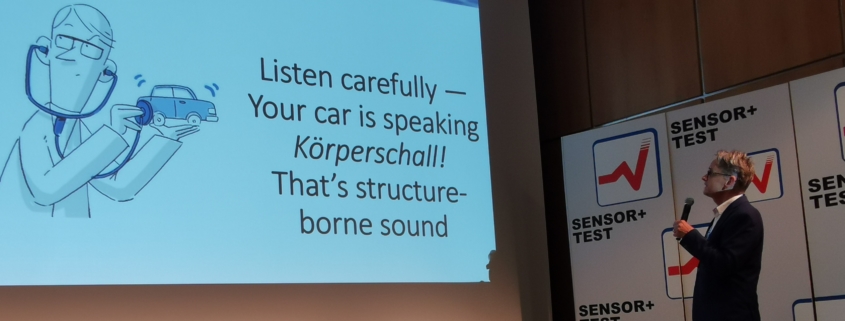SMSI-Conference
The 2025 Sensor and Measurement Science International (SMSI) Conference was held in mutually beneficial conjunction with the leading international trade fair SENSOR+TEST. With this approach, a unique platform has been established serving best the needs of the scientific community and industry. The venue was the Nuremberg Exhibition Center.
Martin Bussas gave a lecture about the analysis of structure-borne sound. The focus was on structure-borne sound recorded by moving vehicles. The lecture was presented as part of a science slam and was titled ‘Did you hear that? That is your car talking!’
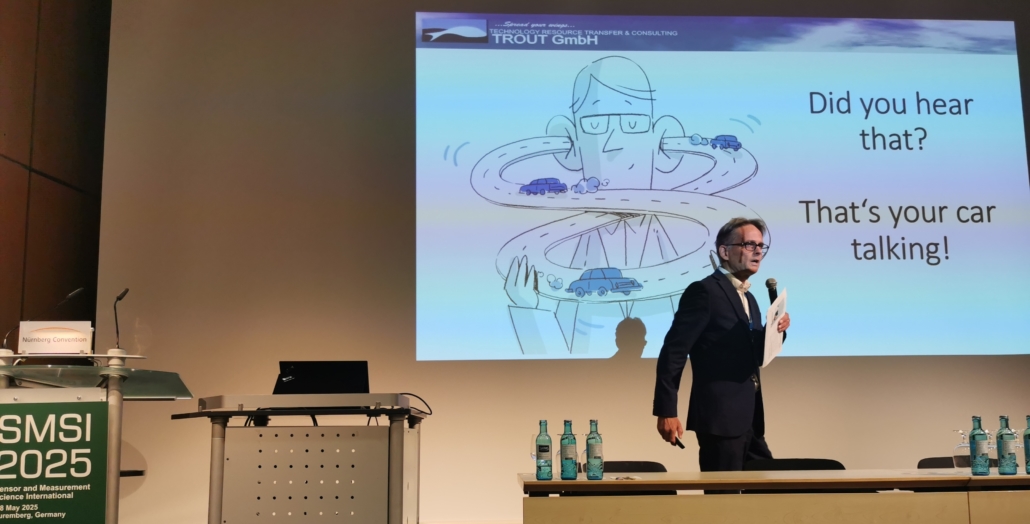
You ever feel like your car knows something you don’t?
Imagine you’re cruising along, the engine’s humming, you’re singing along to your playlist — when suddenly… there it is. A noise. Not a dramatic, action-movie explosion. No, no — this is more subtle.
A faint hum. A delicate rattle. A mysterious whirr that wasn’t there yesterday.
And you do what every reasonable person does:
You turn up the music and pretend it never happened. You think: “It’ll be okay”. Guess what: No, it won’t!
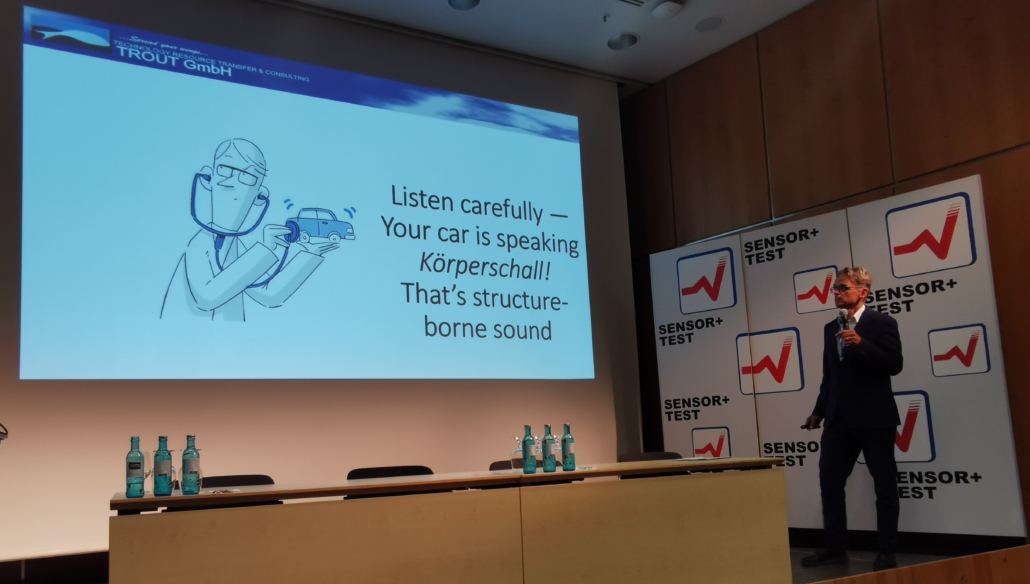
But what is the language?
And unless you’re a suspension whisperer, you’re not going to get the message.
What you’re hearing – or worse, what you’re not hearing – is structure-borne noise. Your car’s secret whisper, actually warning you: “Hey, buddy, my wheel bearing is in trouble!” But because cars can’t talk like we do, we have to decode their body language.
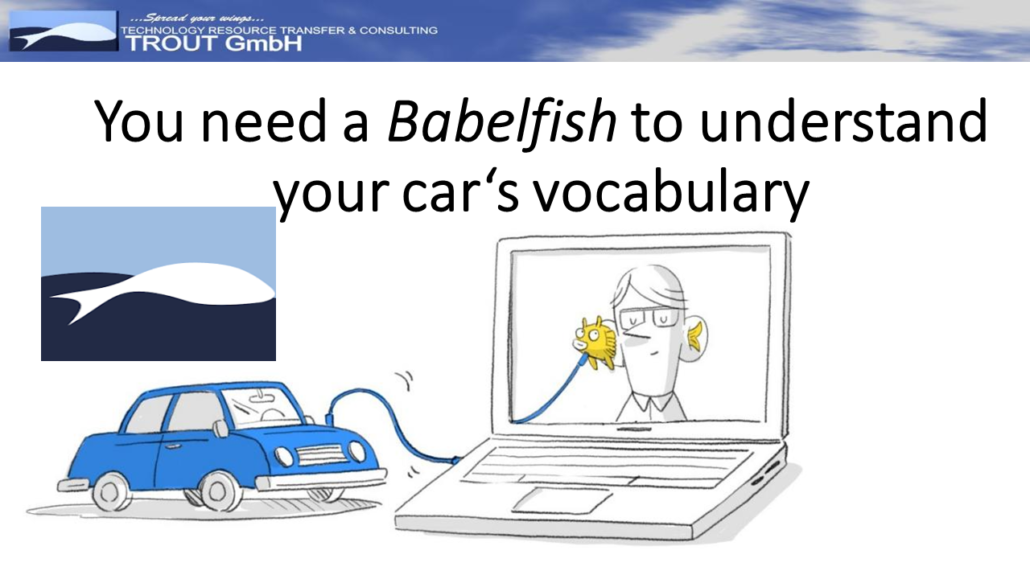
Now, have you read The Hitchhiker’s Guide to the Galaxy? —if you haven’t, please fix that immediately — Remember the Babelfish.
Tiny yellow fish in those days. It is a more sophisticated white fish these days in front of blue and light blue waves.
It resembles my company’s logo and if you put it in your ear, or install it on your computer to be precise and suddenly you understand any language in the universe, or at least what your car is trying to say.
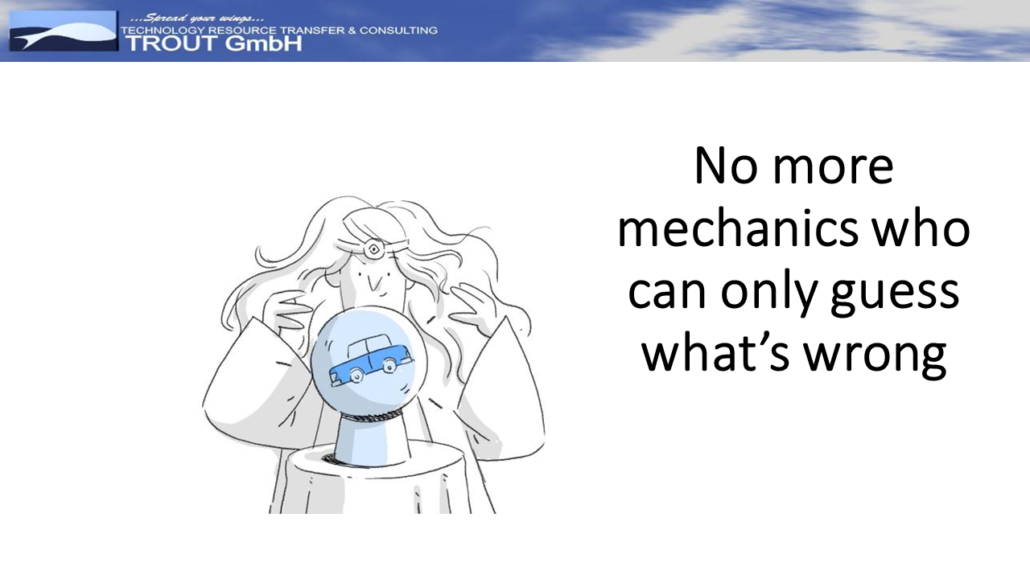
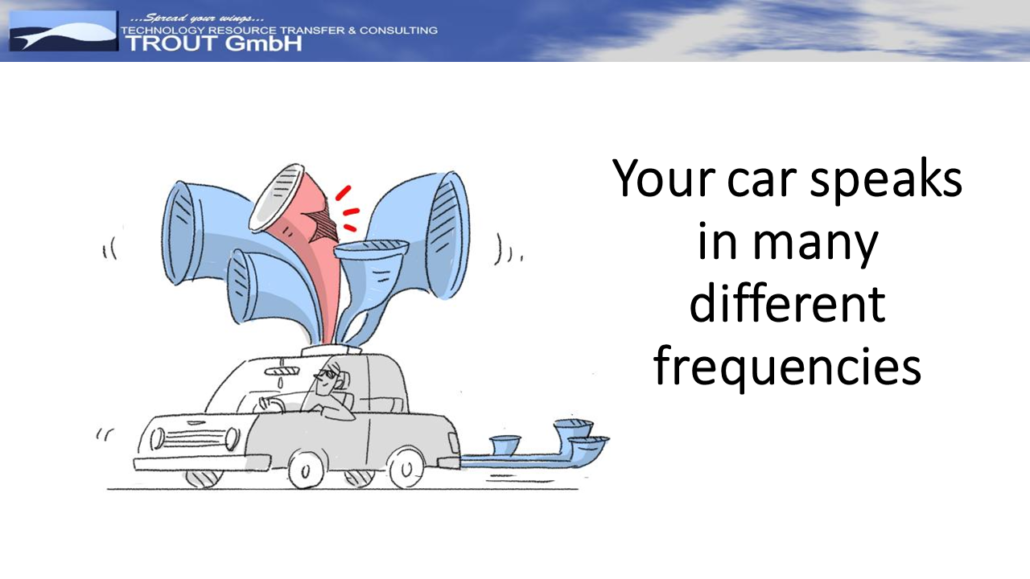
But it’s not speaking French or Klingon. It is like an orchestra. It’s speaking in tiny oscillations, shaking through the chassis, rippling through shafts and bearings.
And what about us?
We have no idea what it’s saying.
But if we could somehow translate those vibes, especially the bad vibes — decode them — we could find out what part of the car is failing, how fast, and why.
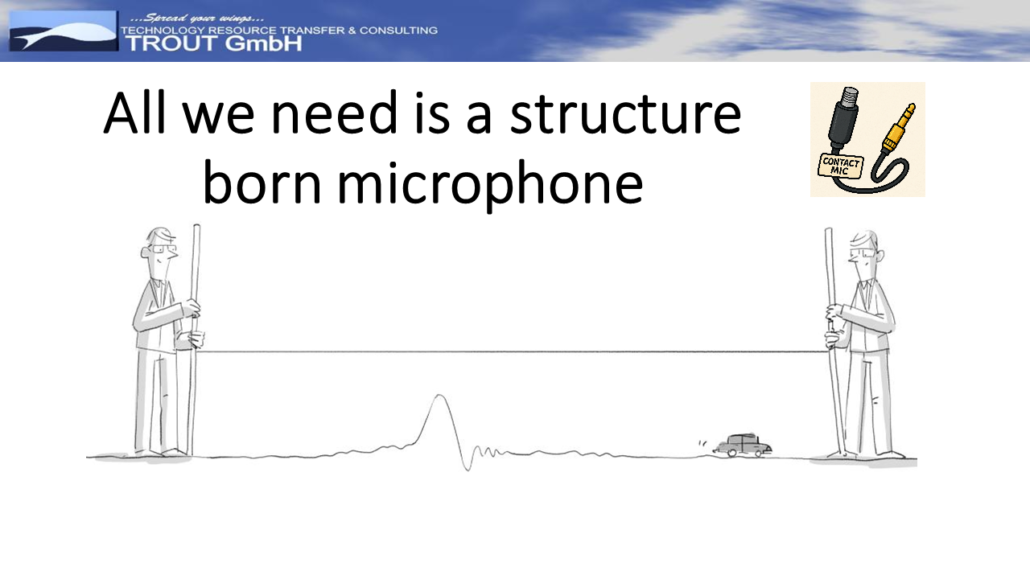
It measures sound and noise over time. The bottom line is the time line. The car moves from left to right. What you get is a time-domain signal — a chaotic squiggly line that looks like the car’s having a caffeine-induced panic attack.

Of course, it’s just music to the ears of a car; for us, it’s more of a constant background noise. That’s why it’s so difficult to detect disharmonies.
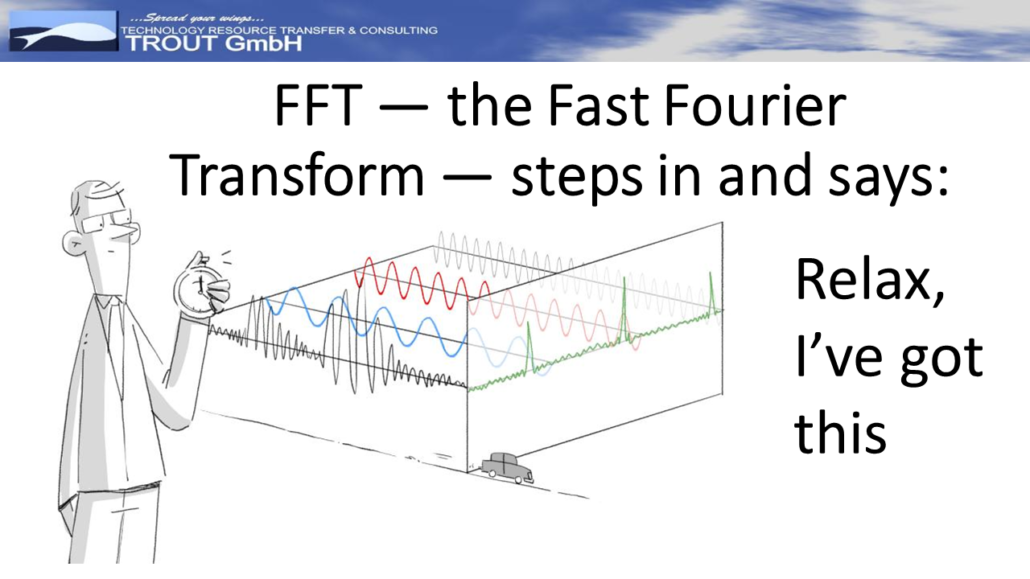
Lock at the car down here. It again produces noise along the time line.
FFT takes that crazy waveform from the time domain – it is here again on the bottom line – and transforms it into a frequency spectrum.
It splits the noise into its musical components. And shows the intensities of the frequencies in a time slide window.
So now, instead of chaos, you see a spike here — that’s your rotating shaft.
And a peak there — that’s a gear meshing frequency.
And a weird wobble at some kHz needs analysis.
It turns out:
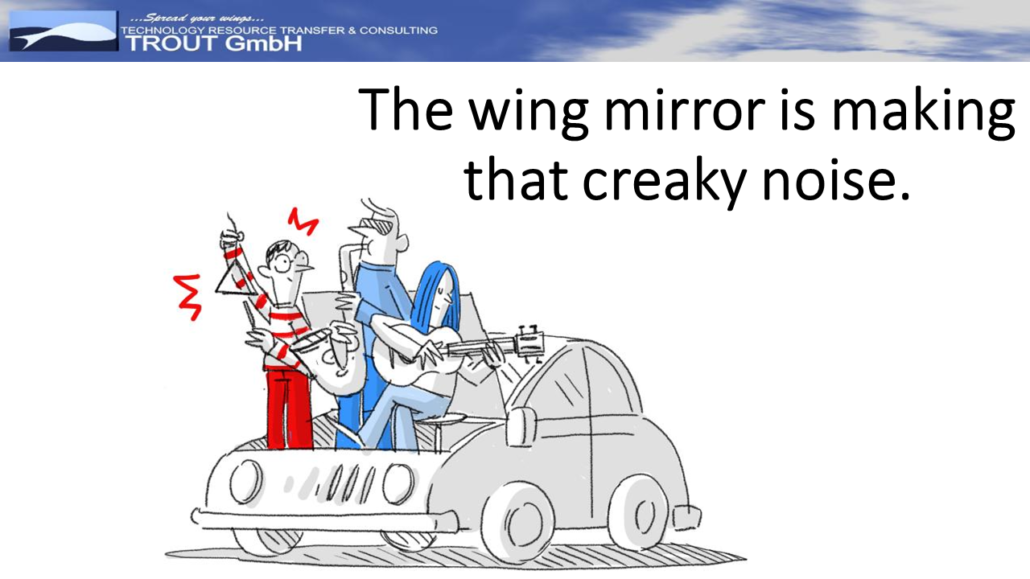
You can now tell because the FFT draws a clear visualization of the musical components. The triangle representing the wing mirror. No drama. Just diagnostics. Keep on going.
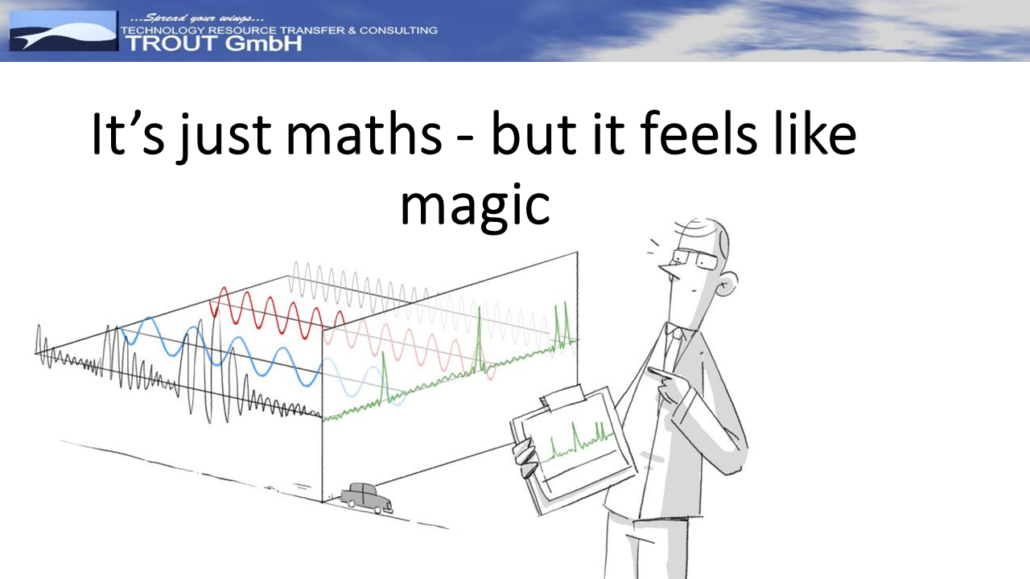
The FFT is math invented by geniuses who probably didn’t get invited to many parties — but now we worship them because they made sense of vibrational gibberish.
And here’s the kicker:
Every kind of mechanical defect has a fingerprint.
An acoustic signature.
So when you hear an additional high-pitched whine at some other kHz here that comes and goes with speed, your FFT-powered analysis doesn’t say:
“Hm, another weird noise.”
It says:
“Impending doom. Rear differential. Start panicking in about 3,000 miles.”
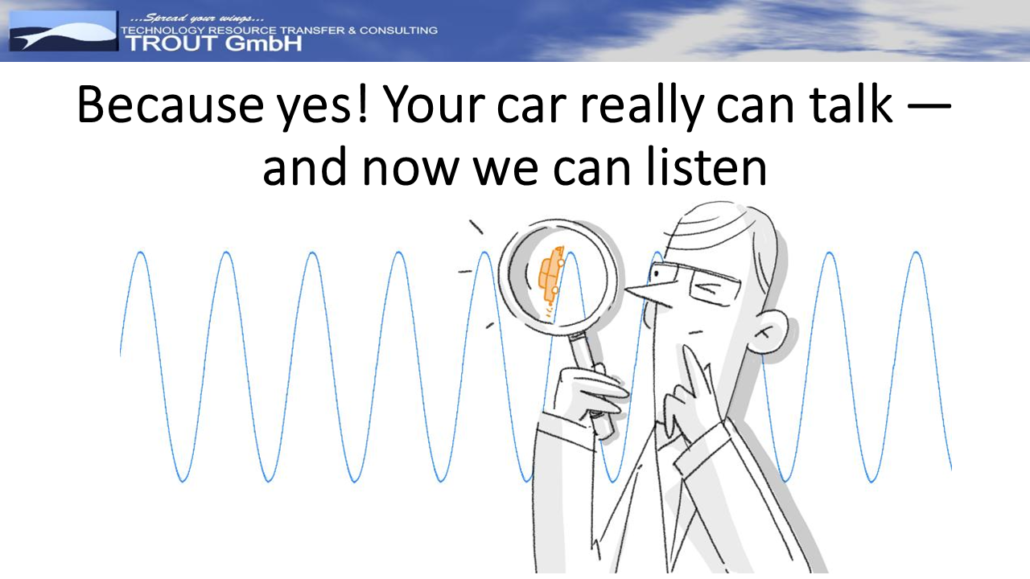
We’ve turned mechanical intuition into data.
We’ve transformed “Huh, that sounds weird…” into:
We measure it, we plot it, and we can predict it.
We’re not just reacting to problems.
We’re predicting them.
We’ve entered the era of Predictive Maintenance – where your car doesn’t need to break down first.
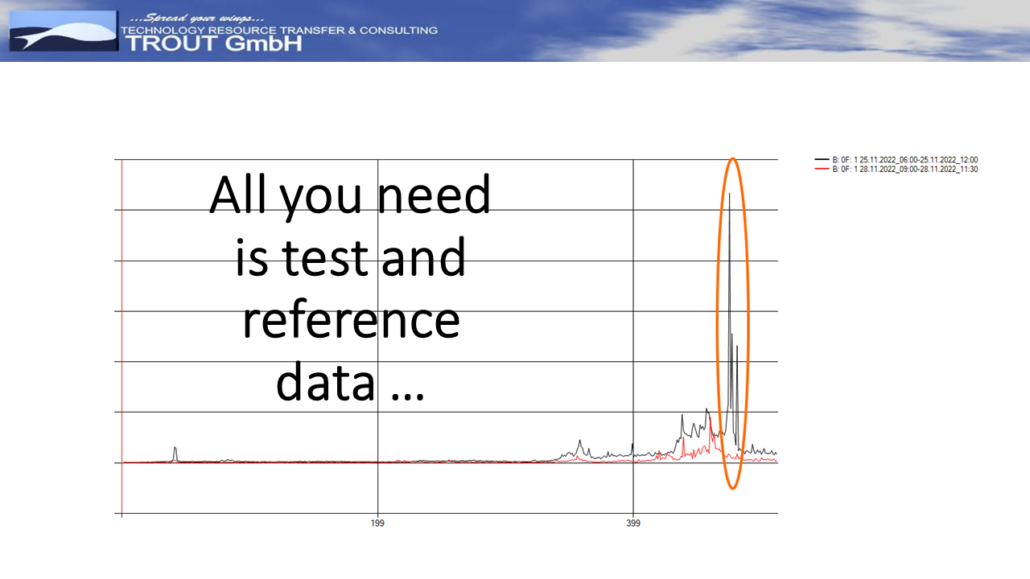
Reference data is red. It comes from a vehicle in perfect working order.
And we need data from vehicles with known problems.
The results of the FFT are subjected to a pattern recognition process.
We see a peak here and there in the red curve, but these are completely normal; after all, the vehicle also makes a noise when it’s working properly.
But here, what the black curve shows, that is worrying and we must take action.
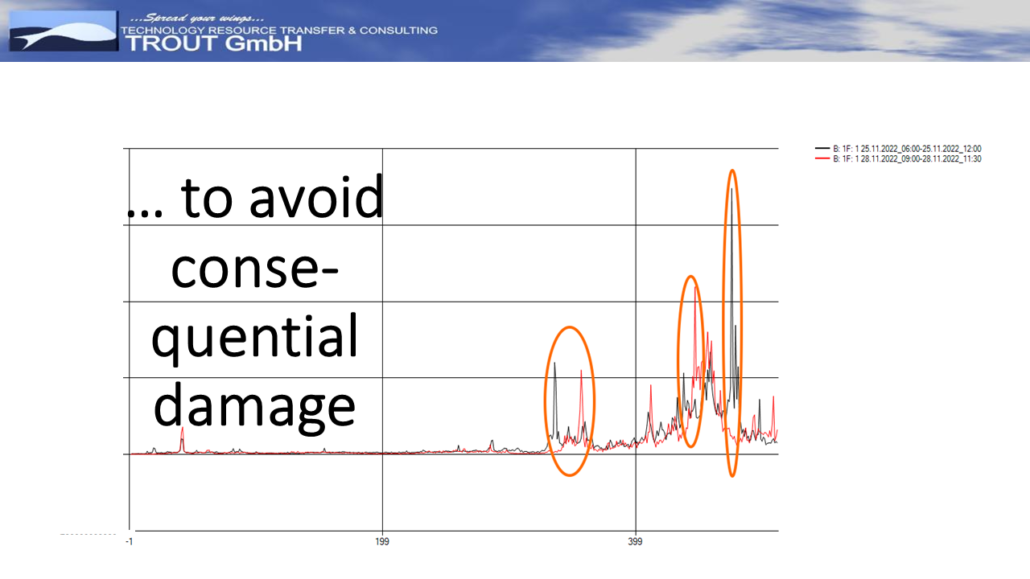
When we analyze the sound of a machine, we’re basically giving it a voice.
We’re saying: “I’m not just going to drive you until you scream.
I’m going to listen when you whisper.”
We want to avoid any consequential damage. This is before more and more frequencies get out of control, until the car is completely taken off the road. Written off before tax, over and done with.
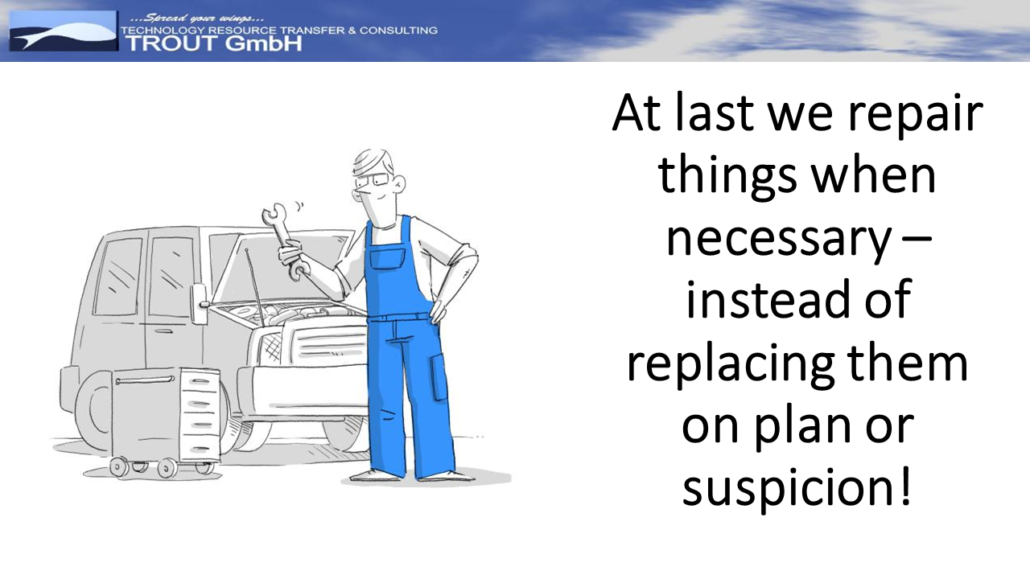
Because FFT and pattern recognition, we now have the tools to listen. To understand.
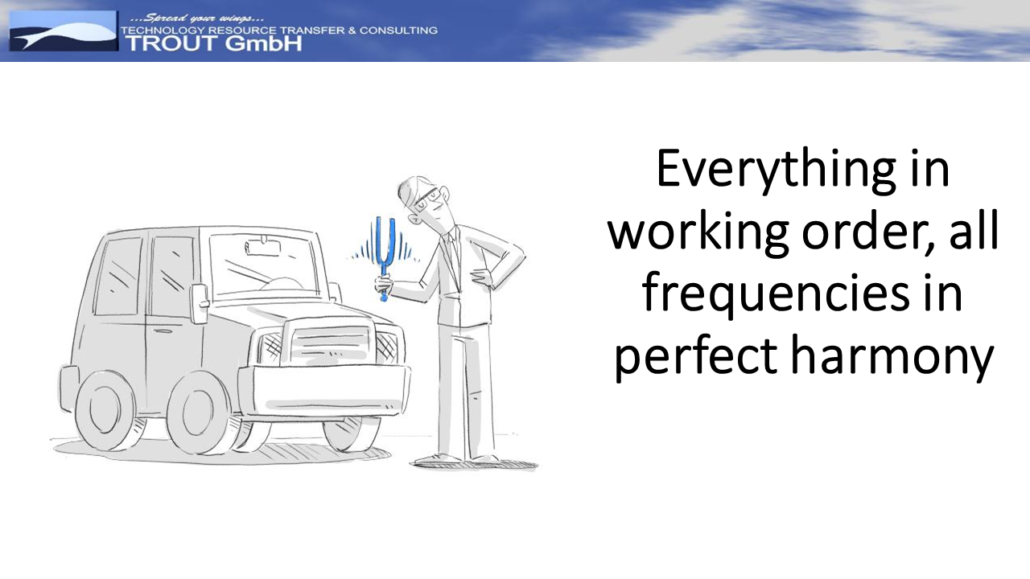

So that was the Babelfish of Engineering.
To Fourier.
And Noise.
And to all the machines out there.
Let’s be smart enough – to listen.
Have a good trip
Thank you and Good Bye

